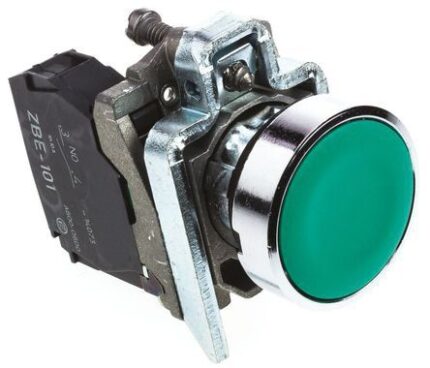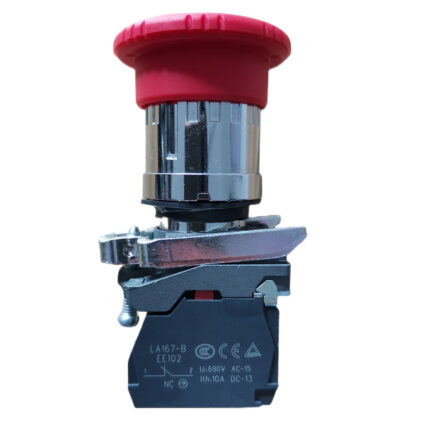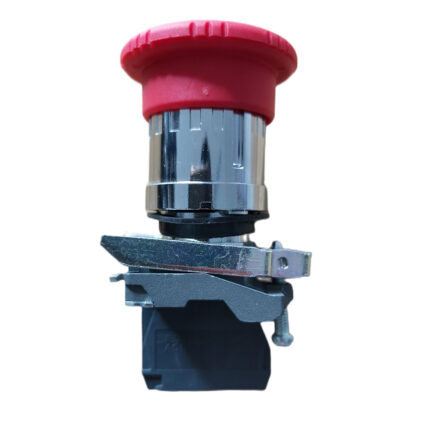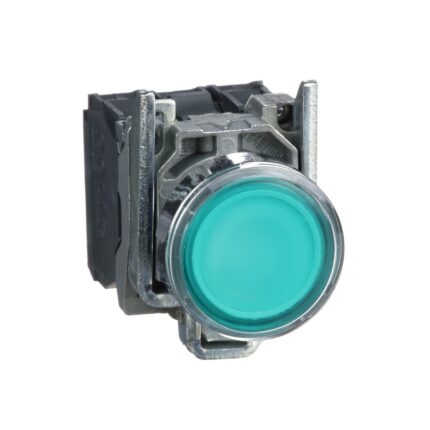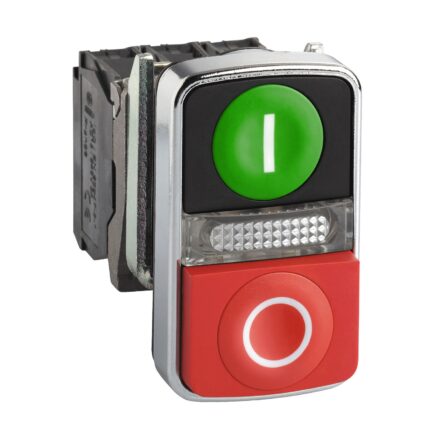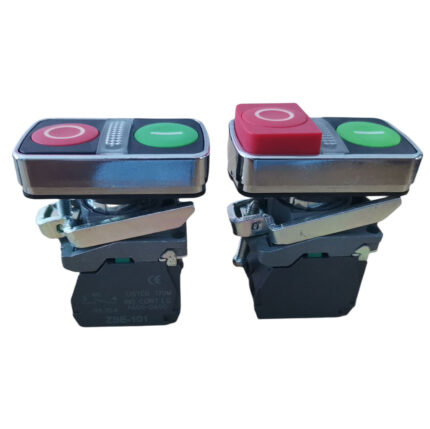XB4BD33 is kind of control and signaling devices, specifically designed for industrial applications. Here’s a detailed description of its features and functionalities:
XB4BD33 Overview
-
Type:
- The XB4BD33 is a push-button switch that is part of the XB4 series of control devices. It is designed for use in various control and automation applications.
-
Design:
- Shape and Size: The XB4BD33 features a round, compact design that is easy to install and operate. It typically has a diameter of 22 mm, which is standard for many industrial push-button switches.
- Material: The switch is made from durable materials that are resistant to impact and harsh environmental conditions, ensuring longevity in industrial settings.
-
Functionality:
- Operation: This push-button switch is designed for momentary operation, meaning it returns to its original position when released. It is often used for functions such as starting or stopping machinery, activating alarms, or other control functions.
- Contact Configuration: The XB4BD33 typically features a normally open (NO) contact configuration, which closes the circuit when the button is pressed.
-
Applications:
- Industrial Control Panels: Commonly used in control panels for machinery and equipment, allowing operators to control various functions easily.
- Automation Systems: Suitable for use in automated systems where manual input is required for specific operations.
- Safety Systems: Often integrated into safety circuits to provide emergency stop functions or other critical controls.
-
Electrical Specifications:
- Voltage Rating: The XB4BD33 is designed to operate at various voltage levels, making it versatile for different applications.
- Current Rating: It can handle a specific current rating, ensuring reliable operation without overheating.
-
Installation:
- Mounting: The switch can be panel-mounted, making it easy to integrate into existing control systems. It typically requires a mounting hole of 22 mm in diameter.
- Wiring: The XB4BD33 features screw terminals for easy wiring and connection to control circuits.
















